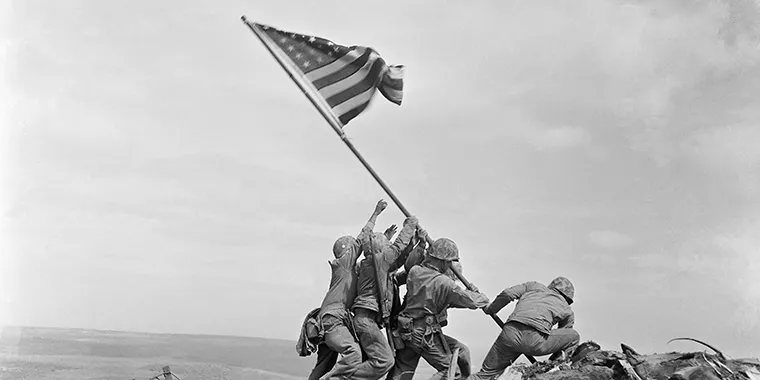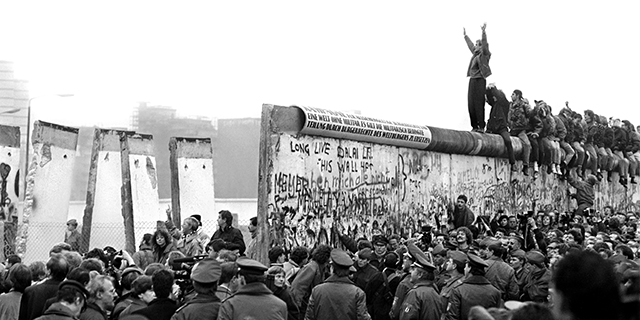Pivot to Asia : Indo-Pacific, USA and China
"Let China sleep, for when she awakes, she will shake the world." - Napoleon Bonaparte, 1817 (While discussing China with Lord Armherst)
In 2011, under President Obama, USA made a notable shift in its policy concerning Asia-Pacific. The 'Pivot to Asia', declared that an increased investment in economic and diplomatic efforts as well strengthening of alliance commitments with allies in the region - Japan, Taiwan, South Korea, Phillipines was the most important task of American foreign policy in the coming decades. To understand what caused this sudden shift and awakening in the attitude of Washington, we need to have a look at some of the key historical events that shaped the way these two giants look at the world.
United States of America - the land of manifest destiny. It is the most sought after piece of real estate in the world, albeit one that is not for taking. After the collapse of Soviet Union in 1991, US became the sole pole in the unipolar world order. It stood unchallenged from all sides and started establishing its rules based world order. But we need to go back two centuries to really understand their interest in China.
In 1823, Washington issued the 'Monroe Doctrine'. It warned the imperial European powers not to seek any land in the Western Hemisphere. They declared the entire American continent to be under their sphere of influence and isolated themselves from the recurring wars in Europe. Thus began the rise of America and it continued to rise unchallenged, it was protected by two vast oceans from either side and had all resources required for industrial growth along with fertile lands and navigable rivers. It was only a matter of time before US became a major power in world politics.
After the League of Nations failed to stop the second World War in Europe. USA decided to stay away from the battlefield and focus on consolidating its already formidable economic and military might. Japanese attack on Pearl Harbour and German declaration of war against USA forced America to enter the war in Europe and Asia. The war ended with USA shocking the world by employing nuclear bombs in its attack on Hiroshima and Nagasaki in August 1945, causing destruction on a scale hitherto unseen by mankind.
The war ended with Europe in shambles. Iron curtain had descended, Germany was divided. USA did not want Soviet Union to expand its sphere of influence towards western Europe, which was under American protection. The Cold War had begun. It continued for four decades. With the two nations competing to establish supremacy not just on land, sea and space but also in cultural spaces like chess, boxing, cinema and most importantly - ideology.
The cold war decades saw United States of America going with an aggressive policy of containment of Soviet Union and Communism that came with it. North Atlantic Treaty Organisation(NATO) was established in 1949 for the same purpose. USA maintained troops and invested heavily in the European security architecture, western Europe came under and thrived in the American security umbrella. It was around this time that USA also began moving towards South and South-East Asia. Wars in Korea and Vietnam were fought and the isolationist USA found itself engaging in military and diplomatic conflicts in all the major regions of the globe.
With the Soviet Union losing out in 'The Great Game' in Afghanistan during 1979-89 and the fall of Berlin wall in 1989. The fall of Soviet Union looked imminent. This only made USA more assertive in international politics as it continued forcing closed economies to open up and join the New Economic Order led by liberal institutions such as IMF, WTO etc. Proliferation of internet and innovation in communication technology, finance, banking, transport became the engine of growth in the new order, globalisation had begun. With the exception of some minor hiccups, such as Gulf War, the dot-com bubble and Y2K frenzy, globalisation and its interconnectedness gave the world almost two decades of unprecedented growth, millions were alleviated from poverty, health and social indicators went up, education became accessible and position of women improved. But, the Financial Crisis of 2008 brought all of it to a screeching halt. The central banks had to bail out the economy in many countries and it was followed by inflation, job loss, rising poverty, increased inequality and slowdown in economic growth.
While the USA was engaging with the world in its bid of establishing a new economic and rules based world order. CHINA was doing exactly what the Americans had done two centuries ago, it remained focused on its own growth without attracting any unwanted attention. The Chinese are among one of the oldest continuing civilisations on Earth. Presently, they are the most populous country and second largest economy in the world. Since China began to open up and reform its economy in 1978, GDP growth has averaged almost 10 percent a year, and more than 800 million people have been lifted out of poverty. It is the single largest beneficiary of globalisation, with India taking second spot. USA brought China into P5 in UN Security Council, extended the economic growth of China by including them in WTO. In words of John Mearshimer, "US has foolishly fed the beast and contributed to its economic and military rise."
During the Cold War and under the policy of President Nixon, the U.S. decided to engage China and form a quasi-alliance with China against the Soviet Union, for the more powerful China became, the more effective it was as a deterrent partner against the Soviet Union. However, once the Cold War ended and the Soviet Union collapsed, the U.S. no longer needed China to help contain the Soviet Union. The U.S. was not only expecting, but, it was purposely helping China to grow more powerful. It was doing this based on the assumption that China would become a democracy over time and therefore would become a responsible stakeholder in an American-led international order. The western elites believed that communism and fascism was no longer a viable option and all states would eventually become liberal democracies, this was reflected in Francis Fukuyama's work "The End of History" published in 1989. His basic claim was that the world was becoming increasingly democratic, and as that happened, the world would become increasingly peaceful. Of course, that didn't happen. China did not become a democracy. And China, in effect, has now set out to establish hegemony in Asia and challenge the U.S. around the planet, thanks to its unprecedented and unchecked growth during the globalisation phase. We now have a new Cold War.
China's rise began with the death of Mao Zedong in 1976. The Chinese state was in total chaos with failed 'Cultural revolution' and 'The Great Leap Forward' started by Mao. The cultural and economic crisis in the communist state had pushed them into a state of paralysis. Under Deng Xiaoping, China established diplomatic relations with the USA. The sleeping giant was beginning to wake up. The opening up of China and their export led growth model soon started to transform their economy and society. The Chinese growth too had its moments, the Tiananmen Square incident of 1989 was a major flashpoint of the time. They got back control of Hong Kong from the British in 1997. But it was after the Financial Crisis of 2008 that China really started to make its presence felt around the globe.
President Xi Jinping came to helm in 2012 and made clear his intention of taking China from a ramshackle, quasi-feudal empire into one of the Great Powers of the 21st century. The driving force behind this push has been China’s historical experiences, most notably those of the 19th and early 20th centuries, known to the Chinese as the 'Century of Humiliation', the Chinese fought Opium Wars where it lost both its territory and its prestige to the imperial powers of the day. The 'Century of Humiliation' is a unifying force within China, the legacy of which persists in the light of current tensions that we see in Indo-Pacific region now.
For the first time in its history, today China is secured in its land borders. The previous generations had to defend their territory from Central Asian hordes of raiders along the silk route. Great Wall of China was built to safeguard its land borders by Ming dynasty 600 years ago. Its trade and economic interests, and energy requirements - oil, gas, coal for sustaining its manufacturing and power demand, requires China to have access to the shipping lanes to all major regions. USA has contained China through the first Island chain - South Korea, Japan, Taiwan. If China can breach that, it still needs to navigate through Philippines, an American ally to access pacific ocean. China imports a major chunk of its oil and gas from the Middle East. To access Middle East, China must go through Malacca strait and Strait of Hormuz, which is a choke point and can be easily blocked. The Chinese Navy is still not strong enough to project its power like the the Americans do in these choke points. The 5th fleet of America is permanently stationed in Bahrain in the Persian Gulf along Strait of Hormuz. To ensure their energy security, China is building its China-Pakistan Economic Corridor(CPEC) and a deep water port in Gwadar. This will help China to bypass the choke point and have a uninterrupted flow of Oil and Gas for its economy.
The Americans have now understood that the future challenge to US hegemony is no longer Russia, but China or even worse China and Russia joining forces together. The world is still Unipolar, lets not doubt that. US is still militarily far more superior that Russia and China. Economically, China can move ahead in coming decades, but the pandemic and trade war with US has already hindered that growth. Rising China has also alarmed the Indo-Pacific powers like India, Japan, Vietnam, Australia and they would prefer to counter balance the Chinese growth by partnering with USA. All this leaves little doubt that Indo-Pacific is going to be the upcoming flashpoint in new emerging Cold War and an active theatre of conflict between US and China. The American 'Pivot to Asia' is a timely move, US has already pulled out from Afghanistan and is actively building partnerships in form of QUAD Security Dialogue, the Five Eyes and AUKUS. Countries like India, Japan and Australia, due to their geographical proximity as well as capability, have a enhanced role to play in containment of China. Measures like Supply Chain Resilience Initiative(SCRI) are a welcome step to stop China from weaponising supply chains. We must sit patiently and see how the current Ukraine-Russia conflict ends to get a clear picture of how things might unfold in the Indo-Pacific in coming years. Different powers have different goals in the region, India must look forward to build interest based coalitions to secure its core interests in the region without actively confronting China. America wants unipolar world and bipolar Asia. China wants bipolar world and unipolar Asia. India wants a multi polar world and a unipolar south Asia.





Good work. keep it up!
ReplyDelete